Windows Update Error 0x8007065e
There is a strong possibility that error 0x8007065e appears when you try to update Windows. This error code indicates a series of problems like preventing you from updating your system correctly and some relevant Windows functions.
The cause of this error code is diverse. First, maybe there is a corrupt file in the system and you are likely to misconfigure the system after it updates unsuccessfully. Second, your antivirus or firewall can be the culprit, too. Third, the Internet connection failure might also get Windows Update stuck and show data of this type is not supported.
Ways to Fix Windows Update Error 0x8007065e
Here are some ways about how to fix this annoying issue. Go through these ways and check which one works best for you!
Way 1: Run Windows Update Troubleshooter
This is one of the best solutions because not only can it solve the Windows Update error 0x8007065e but also can it manage to solve any problem related to Windows updates. Here’s how to do it:
Step 1. Click Start and choose Setting.
Step 2. In the setting interface, you can click Update & Security.
Step 3. Click Troubleshoot and click Additional troubleshooters.
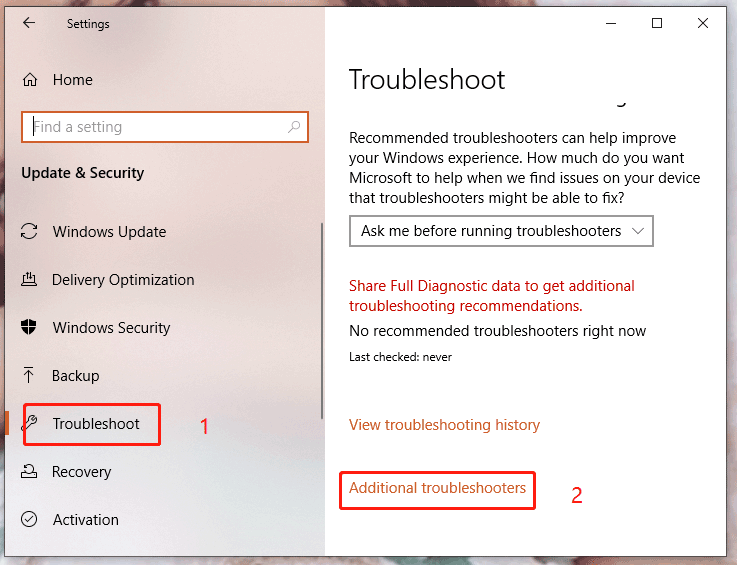
Step 4. Select Windows Update under Get up and running.
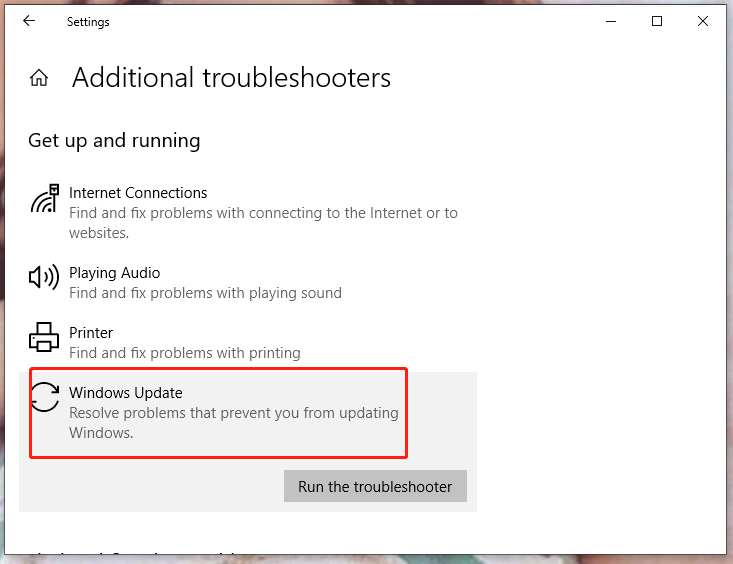
Step 5. Click on Run the troubleshooter and follow the on-screen instructions.
Step 6. Restart your PC and update your system.
Way 2: Use the SFC Command
If Windows Update error 0x8007065e still appears, you should make sure that the system file checker tool repairs the corrupted files. Try the following steps to do this work.
Step 1. Click Start and type cmd.
Step 2. When Command Prompt appears, right-click it and select Run as administrator.

Step 3. There will be a prompt to ask you if you allow the progress to make changes in the system. Click Yes.
Step 4. When the command line window pops up, paste SFC/scannow in the command line and hit Enter.
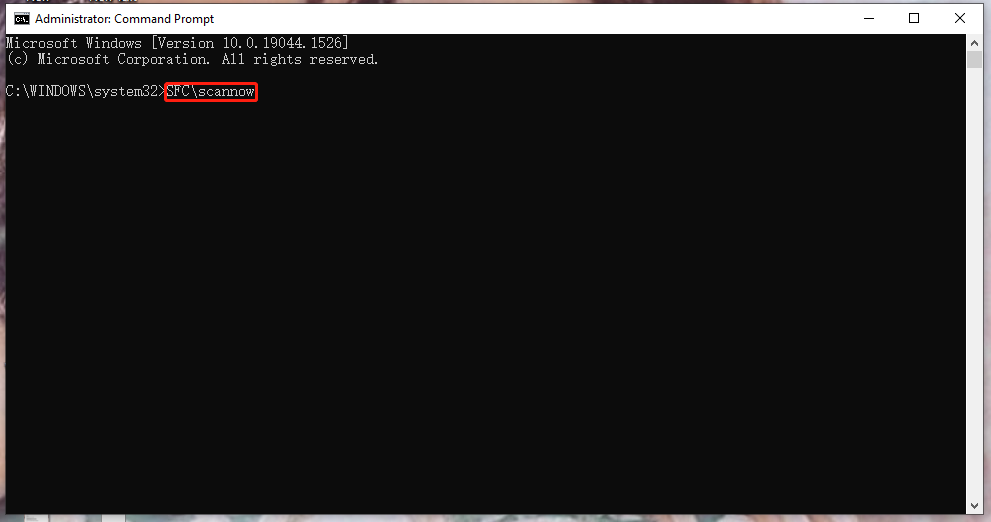
Step 5. Then the operating system will start a scan and fix corrupted and missing files for you.
Step 6. Reboot your computer.
Way 3: Use DISM Command
Windows files are very important for the operating system to run smoothly. You can repair the outdated Windows files that hinder system working performance by using the DISM command. Here are the steps:
Step 1. Open Command Prompt.
Step 2. In the CMD window, paste the following command and hit Enter.
DISM.exe /Online /Cleanup-image /Restorehealth
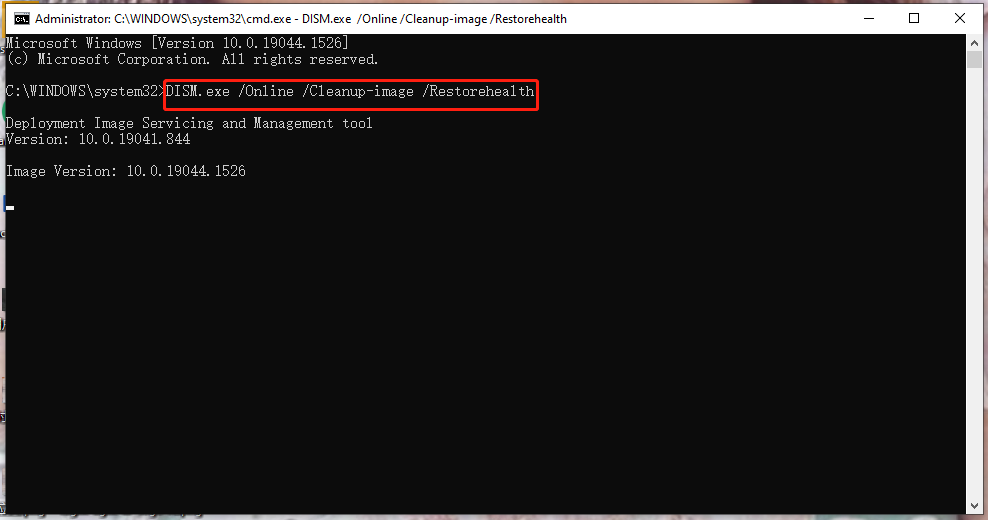
Step 3. The progress might take some time, please wait patiently.
Step 4. Reboot your PC.
Way 4: Rename the Software Distribution Folder
Windows update error 0x8007056e may also result from some corrupted installer files that store in the Software Distribution folders. You can force your system to recreate the folder by renaming a specified one.
Step 1. Open the CMD window.
Step 2. When the black console window pops up, paste the following command and hit Enter after each one.
net stop wuauserv
ren c:windowssoftwaredistribution sdold
net start wuauserve
Step 3. After the progress finishes, reboot your computer.
Way 5: Uninstall the Third-party Antivirus Programs Temporarily
The third-party security program can interfere with the update progress. To prevent this, you can uninstall those applications temporarily by the next steps:
Step 1. Click Start and then select Setting.
Step 2. In the setting interface, click Apps.
Step 3. In Apps & features, click the security software that you want to uninstall.
Step 4. Hit Uninstall.
Step 5. Click Uninstall again after a commission prompt pops up.
Step 6. Restart your PC to check if the Windows update error 0x8007056e still appears.
Way 6: Install the Failed Updates Manually
Rerunning the failed updates can help to locate the missing files and avoid appearing Windows update error 0x8007056e.
Step 1. Click Start and choose Update & Security.
Step 2. Click on Windows Update and then choose View update history.
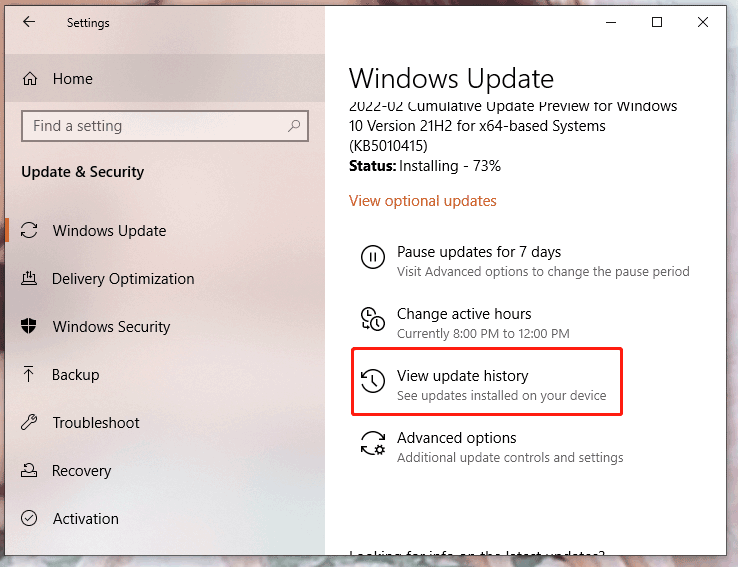
Step 3. If you see the wrong updates, you can download the related files on Microsoft Website again.
Step 4. Install the failed updates manually.
User Comments :